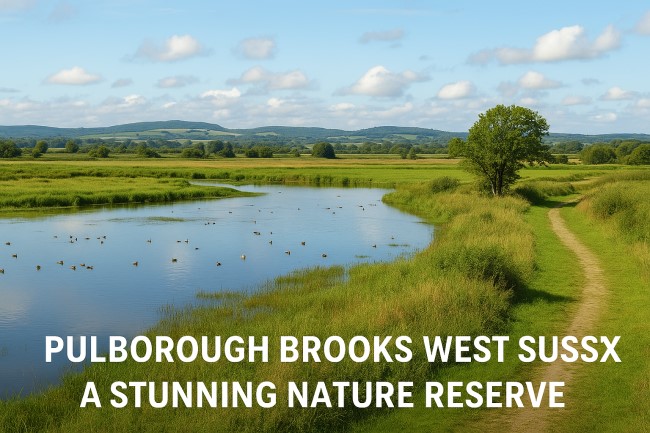Pulborough Brooks West Sussex: A Stunning Nature Reserve and Ideal Coach Outing Destination

Introduction to Pulborough Brooks West Sussex
Pulborough Brooks West Sussex is one of the most treasured nature reserves in the southeast of England. Nestled in the heart of the Arun Valley, this reserve offers spectacular views across the South Downs and provides a haven for diverse wildlife. Managed by the Royal Society for the Protection of Birds (RSPB), Pulborough Brooks attracts nature lovers, birdwatchers, families, and outdoor enthusiasts alike. Its rich wetlands, meadows, and woodlands create a vibrant ecosystem that is accessible and welcoming to all visitors.
Discovering the Beauty of Pulborough Brooks West Sussex
Pulborough Brooks spans approximately 160 hectares of protected land, making it one of the most significant wetland reserves in the country. It lies in an area renowned for its biodiversity, offering a sanctuary for many rare and endangered species. The reserve’s location within the Arun Valley places it amidst scenic countryside, with the rolling hills of the South Downs providing a breathtaking backdrop.
Diverse Habitats and Rich Wildlife
The reserve comprises a mix of habitats, including:
-
Wet Meadows and Marshes: These areas are crucial for aquatic plants and waterfowl.
-
Woodlands and Heathland: Offering shelter for mammals, insects, and woodland birds.
-
Ponds and Ditches: Supporting amphibians and various insect species, especially dragonflies.
Because of this diversity, Pulborough Brooks supports an impressive range of wildlife:
-
Birdlife: The reserve is famous for its bird populations. In spring and summer, lapwings, snipe, yellow wagtails, and skylarks can be observed performing their courtship displays. Migratory birds such as teal, wigeon, and pintail arrive during winter months. Peregrine falcons and barn owls are also regular visitors, delighting birdwatchers.
-
Insects: The reserve is a hotspot for dragonflies and damselflies, with species like the banded demoiselle and scarce chaser dragonfly often spotted in the summer.
-
Mammals and Amphibians: Visitors might see roe deer, fallow deer, grass snakes, and great crested newts throughout the reserve.
The Importance of Wetlands at Pulborough Brooks
Wetlands like those at Pulborough Brooks play an essential role in maintaining environmental health. They act as natural water filters, absorb floodwaters, and serve as carbon sinks that mitigate climate change. For wildlife, these habitats are crucial breeding and feeding grounds, especially for birds and amphibians.
Visitor Experience at Pulborough Brooks West Sussex
Pulborough Brooks is designed to be visitor-friendly, welcoming people of all ages and abilities to experience the beauty of nature up close.
Trails and Exploration
Several walking trails wind through the reserve, offering varied experiences:
-
Wetland Trail: This circular trail runs through the heart of the wetlands, providing excellent opportunities to see water birds and aquatic life.
-
Heathland and Woodland Trails: These paths offer peaceful walks through drier habitats, perfect for spotting woodland birds, butterflies, and other wildlife.
Facilities and Accessibility
The reserve includes:
-
A visitor centre with helpful staff, a small café, and a gift shop featuring nature-related items.
-
Bird hides strategically placed to allow visitors to observe wildlife without disturbance.
-
Facilities such as toilets, baby changing rooms, and wheelchair-accessible paths.
-
Ample parking space and well-maintained paths make the reserve accessible for families with young children and those with mobility needs.
Coach Outing RSPB Pulborough Brooks Nr West Sussex 26 January
Pulborough Brooks is a popular destination for group visits and coach outings, especially organized by schools, clubs, and nature groups. The reserve’s natural beauty and educational value make it ideal for a memorable day out.
Why Choose Pulborough Brooks for a Coach Outing?
-
Educational Value: The reserve offers rich learning opportunities about wetland ecosystems, conservation, and native wildlife. Guided tours and talks by RSPB staff often accompany group visits.
-
Convenient Facilities: The visitor centre and well-maintained facilities can accommodate large groups comfortably.
-
Seasonal Highlights: A coach outing on 26 January or during winter allows visitors to witness the spectacular gathering of wildfowl such as teal, wigeon, and pintail. This is a prime time for birdwatchers to see migratory species that winter in the UK.
Planning a Coach Outing
Groups planning a visit to Pulborough Brooks should consider:
-
Booking in advance with the RSPB to arrange guided tours or educational activities.
-
Dressing appropriately for the weather, especially in January when conditions can be cold and wet.
-
Bringing binoculars and cameras to capture the impressive wildlife.
-
Allocating enough time to explore multiple trails and visit the bird hides.
Related Keywords and Their Relevance
-
Pulborough Brooks West Sussex: The primary keyword highlighting the location and nature reserve.
-
Coach outing RSPB Pulborough Brooks nr West Sussex 26 January: A specific event-related keyword useful for groups planning winter visits or coach trips to the reserve.
Incorporating these keywords naturally throughout this article helps to target search intent effectively, making the content useful for those seeking detailed information on visiting Pulborough Brooks, especially during the winter months.
Tips for Making the Most of Your Visit
Best Time to Visit
Pulborough Brooks offers something unique all year round:
-
Spring and Summer: Ideal for spotting breeding birds and vibrant insect life.
-
Autumn: Wonderful for experiencing changing foliage colors and fungi spotting.
-
Winter (including January): A haven for wintering wildfowl and migratory birds.
What to Bring
-
Comfortable walking shoes or boots, especially during wetter months.
-
Binoculars and a camera for wildlife viewing and photography.
-
Weather-appropriate clothing, including waterproofs in winter.
-
A packed lunch or snacks, although the visitor centre café offers refreshments.
Respecting Nature
Visitors should:
-
Stay on marked paths to protect sensitive habitats.
-
Avoid disturbing wildlife, particularly nesting birds or hibernating amphibians.
-
Take litter home or use provided bins to keep the reserve clean.
Conclusion
Pulborough Brooks West Sussex is a must-visit destination for anyone interested in nature, wildlife, and scenic beauty. Whether you’re planning a peaceful day out, a family adventure, or a group coach outing such as those organized in January, the reserve provides an enriching experience that connects you with the environment. Its combination of accessible facilities, stunning habitats, and diverse wildlife ensures that Pulborough Brooks remains a highlight of West Sussex’s natural heritage.



